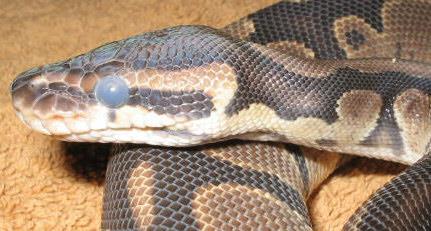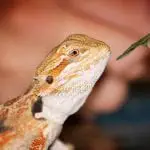The shedding of the skin of a snake is a natural process that they undergo for their overall growth and well-being. It is an important process to regenerate new skin cells; this process is called ecdysis. Snakes shed their skin frequently depending on different factors such as their age, growth rate, as well as their environment. Snakes grow all their all through their lives; it means that they always shed their skin. It is expected that the juveniles will shed rapidly towards their maturity ages while adult snakes are expected to shed a few times a year.
The snakes, whether in captivity or in the wild experiences shedding problems. When a snake in the wild experiences is shedding problems, it is quite complicated because no one will help them. When a shed accumulated, it could lead to other health problems, especially on their eye area, multiple eye caps that were not removed properly can cause blindness, which is fatal. Shedding problems in captivity is quite tolerable because there are humans that can assist them to have a smooth shedding,
Signs That Your Snake Is About to Shed
Before the snake shed their skin, there are signs that you need to observe. It is a must to know these signs to be fully aware of the physical changes that your snake undergoes because if not, you might have mistaken it for a health condition. After the behavioral and physical changes, your snake undergoes, their normal appearance will go back, and you will just have to wait for a few more days before the actual shedding. These are the normal changes that your snake will show a week after the actual shedding:
- The normal color of snakes is in black, but if they are about to shed, you will notice that it will become bluish characterized by a cloudy appearance. There is also a loose scale cover on each eye. At this point, the snake’s vision is somehow distorted, where it cannot see properly.
- Aside from the eye color, some parts of their skin will first change and will have a dull or hazy appearance. You will also notice that their belly will turn into a pinkish undertone.
- When it comes to their eating habits, they may have a decrease in appetite or some snakes do not eat at all.
- During this phase, they may be aggressive, hot-tempered, and less active. Hiding is a way for them to relax, so you may see them hide more than usual.
What to do if the Snake has Shedding Problems?
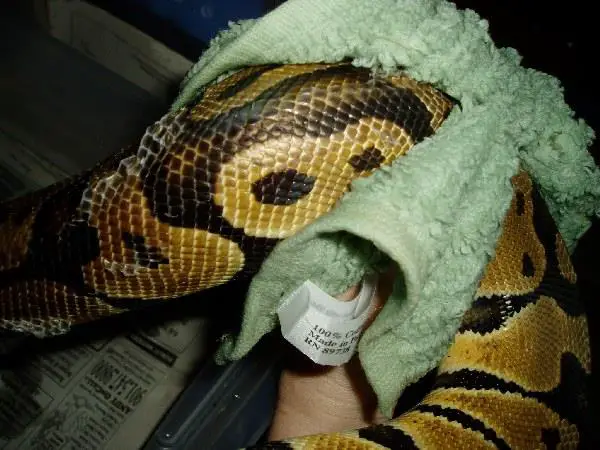
It is important to distinguish a normal shedding from an abnormal shedding so that you can access the snake’s condition during the shedding process. Normal and healthy shedding is characterized by shedding off the skin in just one inverted sheet. However, you know that your snake is having problems shedding off its skin or known as dysecdysis if there are retained shed and if the skin is removed pieces by pieces. There are a couple of reasons why the snake doesn’t shed completely; the common reason is husbandry issues wherein the temperature and humidity level is incorrect.
The snake needs a lot of humidity to help keep its skin moisturized for easy shedding. During the shedding period, you may place a damp cloth, or you may spray their cage with water to increase the humidity level. When you notice that there are flakes of skin that were not removed, put a large bowl in their cage with lukewarm water just enough to wet their skin so that the skin will come off easily. Rough textured accessories such as stones and tree branches will also be helpful in rubbing off the skin easily, so be sure that before they shed their skin, these accessories are ready to be used.
There are some cases that even though you have done steps to assist your snake in shedding properly, it is still not enough, that’s the time that you need to seek medical attention because there is a possibility that the problem of the snake is not an external factor and maybe there is an underlying health condition. It could be tempting to remove the excess skin by yourself, but this is not advisable because you may just put harm into your snake’s skin, let the veterinarian do it.
Common Reasons Why Snake Does Not Shed Completely

- Dehydration. If your snake is dehydrated, most likely it will have dry skin by the time it will shed its skin, increasing the chance of having retained skin. If their skin is moisturized, skin patches will be avoided. Being well hydrated is not only good for their shedding, but it is also essential for their overall health, so make sure to check on what they eat and see to it that water supply is always available in there for soaking and drinking.
- Humidity level. The high humidity level is the ideal environmental condition that they are in to facilitate proper shedding. If you see that they have difficulty shedding, you may increase the humidity level by means of spraying their cage with water and by placing a damp cloth inside and make sure that the cover of their cage is appropriate to give in more humidity. You may need to invest in a humidity and temperature thermometer so that you can easily manage it.
- Improper Husbandry. This includes an incorrect way of handling, improper nutrition, and incorrect environmental conditions. When the issue is about improper husbandry, it can be corrected right away so that you can assist your snake in shedding.
- Nutritional Deficiency. When your snake lacks certain vitamins and minerals, specifically Vitamin A, there are higher chances that they will suffer dysecdysis or shedding problems, so it is important that your snake is enriched with Vitamin A all throughout its lifespan. Be sure that the food that they are given to them is healthy. Consult your veterinarian about the foods that you can include in your snake’s diet plan to avoid having nutritional deficiencies.
- Skin Dermatitis. If your snake experiences it prior to shedding, there is a possibility that it would affect the way how they loosen off their old skin. A way to address it is to take the snake to the veterinarian as soon as you see any irregularities on the appearance of their skin, especially if it is not the shedding season.
- Stress and trauma. Inability or difficulty in shedding is also caused by internal factors such as stress and trauma, where it affected the snake’s hormonal functioning that causes a delay. They are stressed when they lack rest due to frequent handling; that is why as soon as you notice physical changes in your snake’s appearance, avoid handling them and, as much as possible, avoid staying on their cage for a long time for them to fully prepare for the actual shedding.
Do’s and Don’ts When a Snake Shed
Do’s
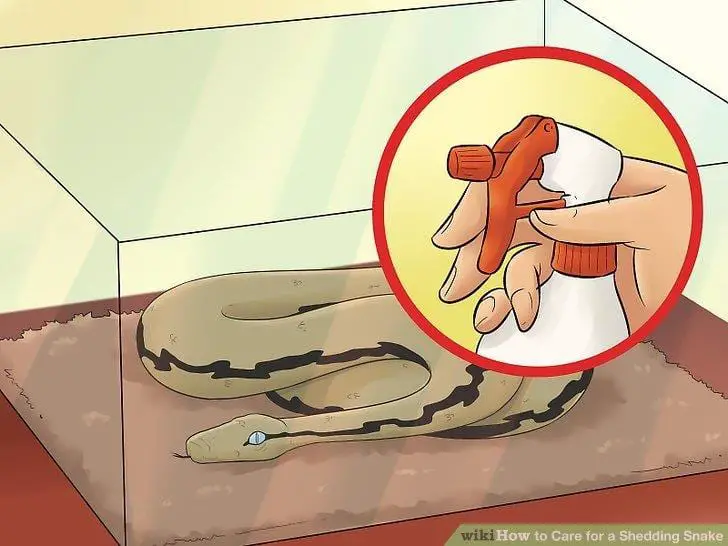
- Know what to expect before, during, and after a snake shed.
- Make sure that the temperature and humidity in their environment are ideal; you may need to DIY just to achieve an ideal environment to facilitate shedding.
- When you see retained skin, you may let your snake soak their bodies in a basin of water for a couple of minutes or let them wrap their bodies in a wet towel to soften the retained skin.
- Take your snake to a veterinarian if you notice that they have shedding problems even though their environment seems okay.
- After the snake removes its skin, make sure to remove their shed immediately because it may be a breeding ground of bacteria.
Don’ts
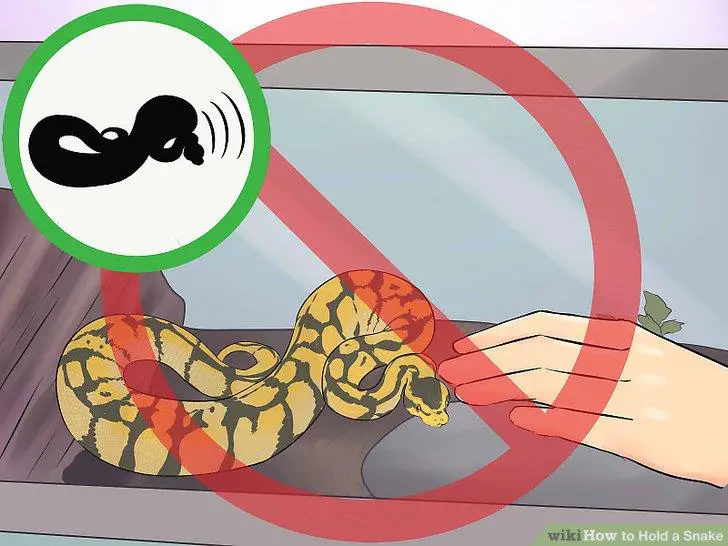
- Handling them frequently or even going near their cage often is a no-no. Before and while they shed, their temperament changes, so make sure to give them space to do their thing.
- If you see that there are skin patches that didn’t shed off properly, don’t pull it.
- Don’t ignore shedding problems because it may be a sign of other serious diseases or illnesses.
- Don’t bathe them for how many days after they shed. Bathing is a way for them to get moisturized, but after they shed, it is advisable to wait for a couple of days before doing their actual bathing just enough to close their pores.
Final Thoughts
Captive snakes that are healthy and well-maintained usually have no problems shedding. It is always important to be attentive to this phase your snake is going through, so if in case there is a problem, you can immediately attend to them. Shedding is a part of their grooming; it is a way for them to clean their bodies. Don’t let your snakes suffer from shedding problems, be vigilant in finding ways on how to help them.

